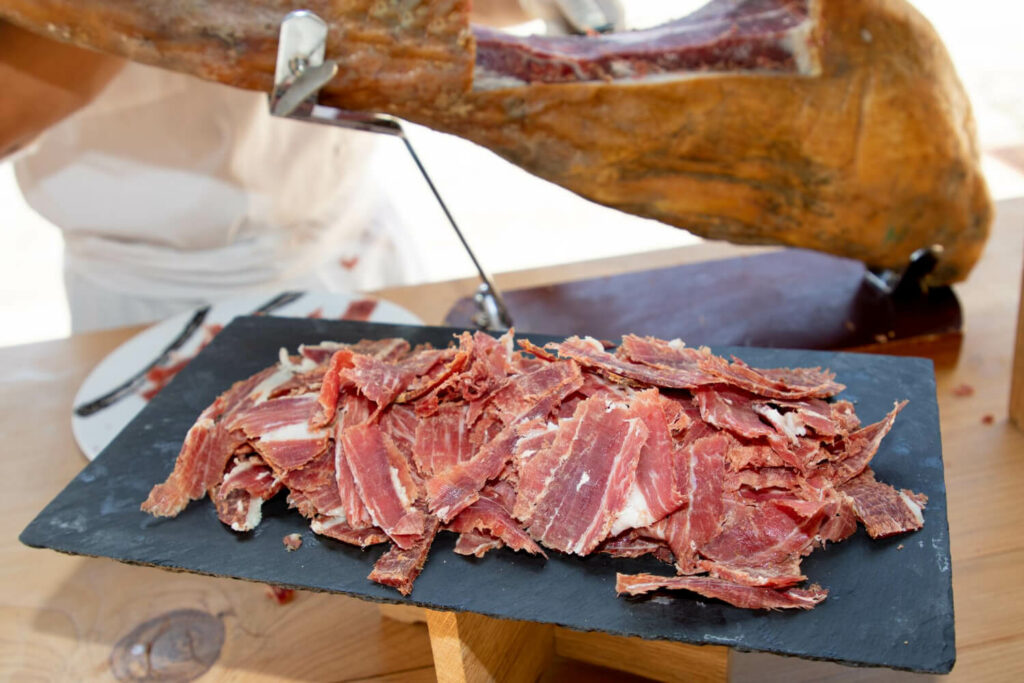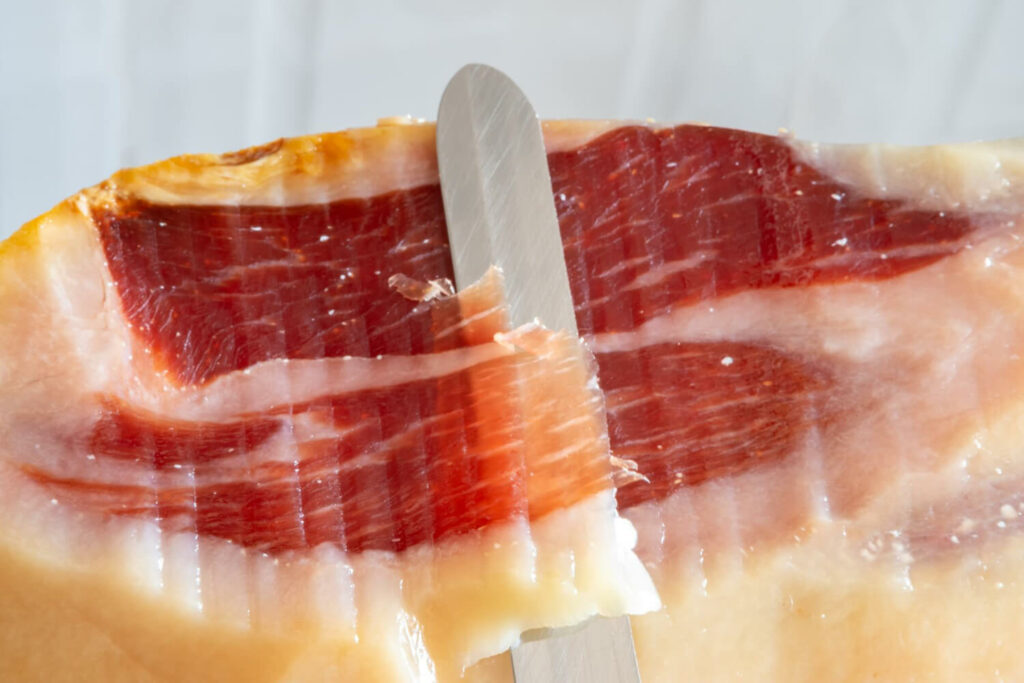The term “pata negra” is frequently used to describe a high-quality ham, but is it really a guarantee that it is 100% Iberian? Although it is popularly associated with the best hams, its use in the market has caused confusion.
Where does the expression “black foot” come from?
The origin of the term is related to the appearance of Iberian pigs, which usually have black hooves. For years, this visual characteristic has been used as an indication of racial purity and quality of the ham. Not all 100% Iberian pigs have black hoofs, nor are all hams with black hoofs pure Iberian pigs.
This ambiguity has led to “pata negra” being used commercially to refer to high-end hams, although its real meaning is regulated by the Iberian ham regulations.


The regulations for Iberian ham and the use of “pata negra”
To avoid confusion, in 2014 regulations were established in Spain that regulate the labeling of Iberian ham. According to this regulation, only hams from 100% Iberian pigs fed exclusively with acorns in Montanera can carry the black badge on their label, which guarantees their racial purity.
This means that an authentic “pata negra” ham must meet these requirements:
- Proceed from 100% Iberian pigs.
- Be raised in freedom in the pasture and fed with acorns during the montanera.
- Wear the official black seal, which certifies your category.
If a ham does not have a black seal, it cannot be considered authentic “pata negra”, even if it has a dark hoof.
Are all Iberian hams made from pata negra?
No. Within Iberian ham there are different categories depending on the breed of pig and its diet. These are identified with four colored seals:
- Black seal: ham 100% acorn-fed Iberian ham, the authentic “pata negra”.
- Red seal: Iberian acorn-fed ham, but from pigs with at least 50% of the Iberian breed.
- Green seal: Iberian field-baited ham, raised in the countryside with a mixed diet.
- White seal: Iberian ham, from pigs raised on farms with feed.
Only the black seal guarantees that the ham is from 100% Iberian pigs fed with acorns.
How to identify an authentic pata negra ham
To ensure that you are buying a 100% acorn-fed Iberian ham, look at the following aspects:
The seal
It must be black and placed by an authorized certifying body. Without this distinction, it cannot be guaranteed that the ham is really “pata negra”.
The label
In addition to the seal, the label must indicate “100% Iberian” and specify that it comes from pigs raised in montanera with acorn-based diet.
The price
100% Iberian acorn-fed ham is the most exclusive and its price is higher. A price that is too low may indicate that it is not really in this category.
The origin
Authentic Iberian hams come from recognized areas such as Dehesa de Extremadura, Jabugo (Huelva), Guijuelo (Salamanca) or Los Pedroches (Córdoba). The designation of origin on the label is an additional guarantee of quality.
Can other hams be called “pata negra”?
In everyday language, many people use “pata negra” as a synonym for quality, even to refer to other products. However, in official terms, the use is limited to 100% Iberian acorn-fed ham.
In some cases, producers have tried to take advantage of the confusion to label hams with black hoofs as “pata negra”, even though they do not meet the requirements of Iberian regulations.


The term “blackleg” is a popular expression and a regulated category. A ham with this designation must be 100% acorn-fed Iberian, raised in freedom and with the official black seal.
To avoid confusion, it is important to check the label, origin and certification before purchasing a ham. If you’re looking for authentic quality, make sure it ticks all the boxes.

